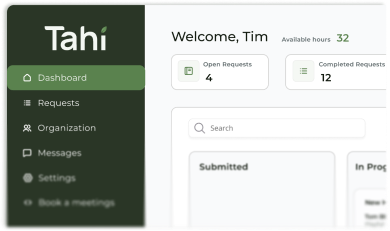Lock-in Contract
A lock-in contract is a long-term agreement that legally binds a client to a service provider for a fixed period, often with steep penalties for early termination.
What are the biggest disadvantages of a lock-in contract with a web agency?
The primary disadvantage of a lock-in contract is the complete loss of flexibility. Business needs change, market conditions shift, and strategic priorities can pivot unexpectedly. A rigid 12 or 24 month contract can leave you stuck paying for services that are no longer aligned with your goals, or worse, trapped with an agency that is underperforming.
This lack of agility can be a significant roadblock. If you need to scale services up or down, or reallocate your budget to a more pressing area, a lock-in contract often makes this impossible without incurring hefty penalties. It essentially forces you to predict your needs far into the future, which is a difficult task in the fast-paced digital world.
How do lock-in contracts affect the quality of web design and development?
While not always the case, lock-in contracts can inadvertently create an environment where the incentive for an agency to consistently deliver its absolute best work is reduced. Once the contract is signed, the pressure to earn your business each month is gone. This can sometimes lead to complacency, slower response times, and a gradual decline in proactive strategic thinking.
In a flexible, subscription-based relationship, the agency must continually prove its value to retain you as a client. This fosters a culture of accountability and an unwavering commitment to quality. The focus remains on delivering outstanding results, whether it's building a new component in Webflow or refining a design in Figma, because the partnership is based on performance, not just a contractual obligation.
Are there any situations where a long-term contract is beneficial?
It's important to have a balanced perspective. For certain types of projects, a long-term contract can make sense. Think of massive, multi-year infrastructure projects where the scope is meticulously defined from the outset and is highly unlikely to change. In these scenarios, a contract can provide predictable budgeting and resource allocation for both the client and the provider.
However, for the dynamic needs of most businesses building their digital ecosystem, this model is often too restrictive. Web design, Webflow development, and digital strategy are iterative processes that benefit from agility and the ability to adapt to user feedback and market trends. A model that allows for this evolution is almost always more suitable.
What are the modern alternatives to a traditional agency lock-in contract?
The most powerful alternative is the productised service or subscription model. This approach revolutionises the client-agency relationship by offering expert services, like Webflow design and development, on a flexible monthly subscription. There are no long-term commitments, and you typically have the freedom to pause or cancel your plan as your needs change.
This model puts the power back in your hands. It combines the quality and expertise of a dedicated agency with the flexibility previously only associated with hiring freelancers. You get access to a team of specialists, streamlined processes through a client dashboard, and predictable monthly costs, all without the risk of being locked into a relationship that no longer serves you.
How can my business achieve project stability without a restrictive lock-in contract?
True stability in a creative partnership doesn't come from a legal document; it comes from trust, consistent quality, and transparent communication. A relationship built on mutual respect and proven results provides far more security than any contract ever could. When you know your agency partner is dedicated to your success, you gain the confidence to plan long-term.
At Tahi Studio, our productised Webflow services are designed to provide exactly this. We offer the stability of an ongoing, dedicated team with the complete flexibility of our 'Pause or Cancel Anytime' promise. We focus on being a genuine partner in your growth, delivering uncompromising quality that makes you want to continue working with us, month after month. This allows you to build your digital foundation with confidence, knowing you have a team that adapts with you.







